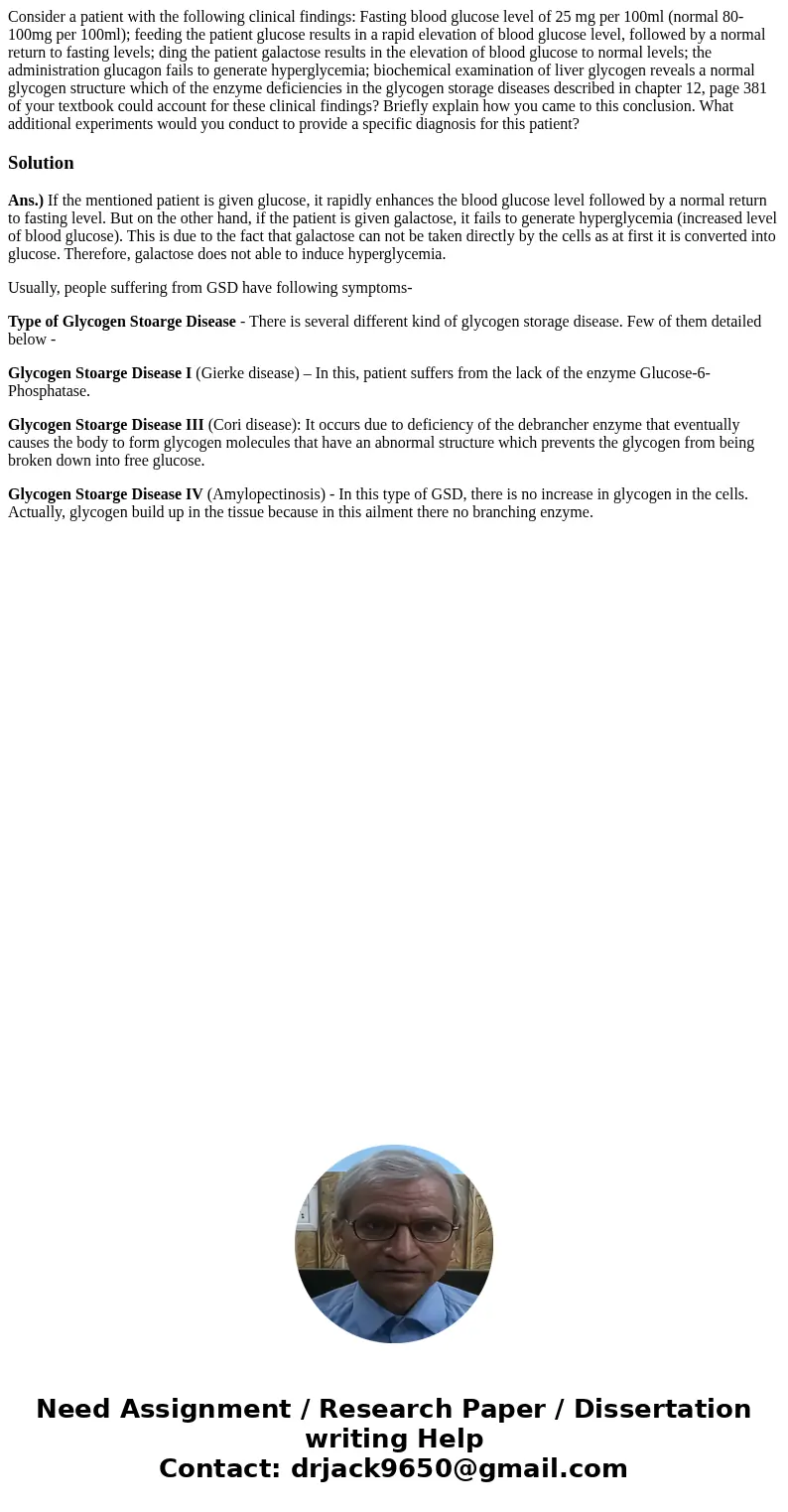Consider a patient with the following clinical findings Fast
Solution
Ans.) If the mentioned patient is given glucose, it rapidly enhances the blood glucose level followed by a normal return to fasting level. But on the other hand, if the patient is given galactose, it fails to generate hyperglycemia (increased level of blood glucose). This is due to the fact that galactose can not be taken directly by the cells as at first it is converted into glucose. Therefore, galactose does not able to induce hyperglycemia.
Usually, people suffering from GSD have following symptoms-
Type of Glycogen Stoarge Disease - There is several different kind of glycogen storage disease. Few of them detailed below -
Glycogen Stoarge Disease I (Gierke disease) – In this, patient suffers from the lack of the enzyme Glucose-6-Phosphatase.
Glycogen Stoarge Disease III (Cori disease): It occurs due to deficiency of the debrancher enzyme that eventually causes the body to form glycogen molecules that have an abnormal structure which prevents the glycogen from being broken down into free glucose.
Glycogen Stoarge Disease IV (Amylopectinosis) - In this type of GSD, there is no increase in glycogen in the cells. Actually, glycogen build up in the tissue because in this ailment there no branching enzyme.

 Homework Sourse
Homework Sourse